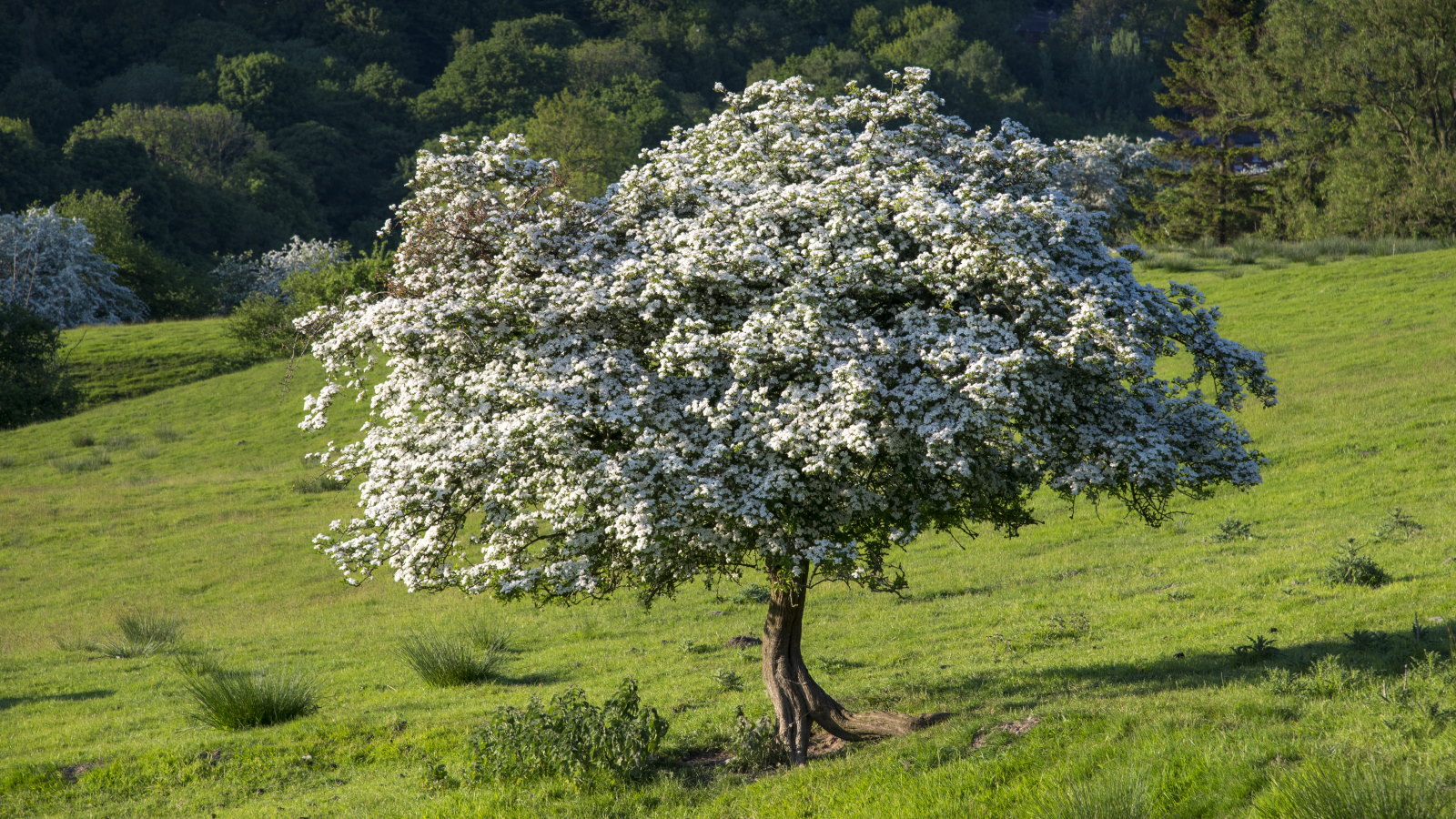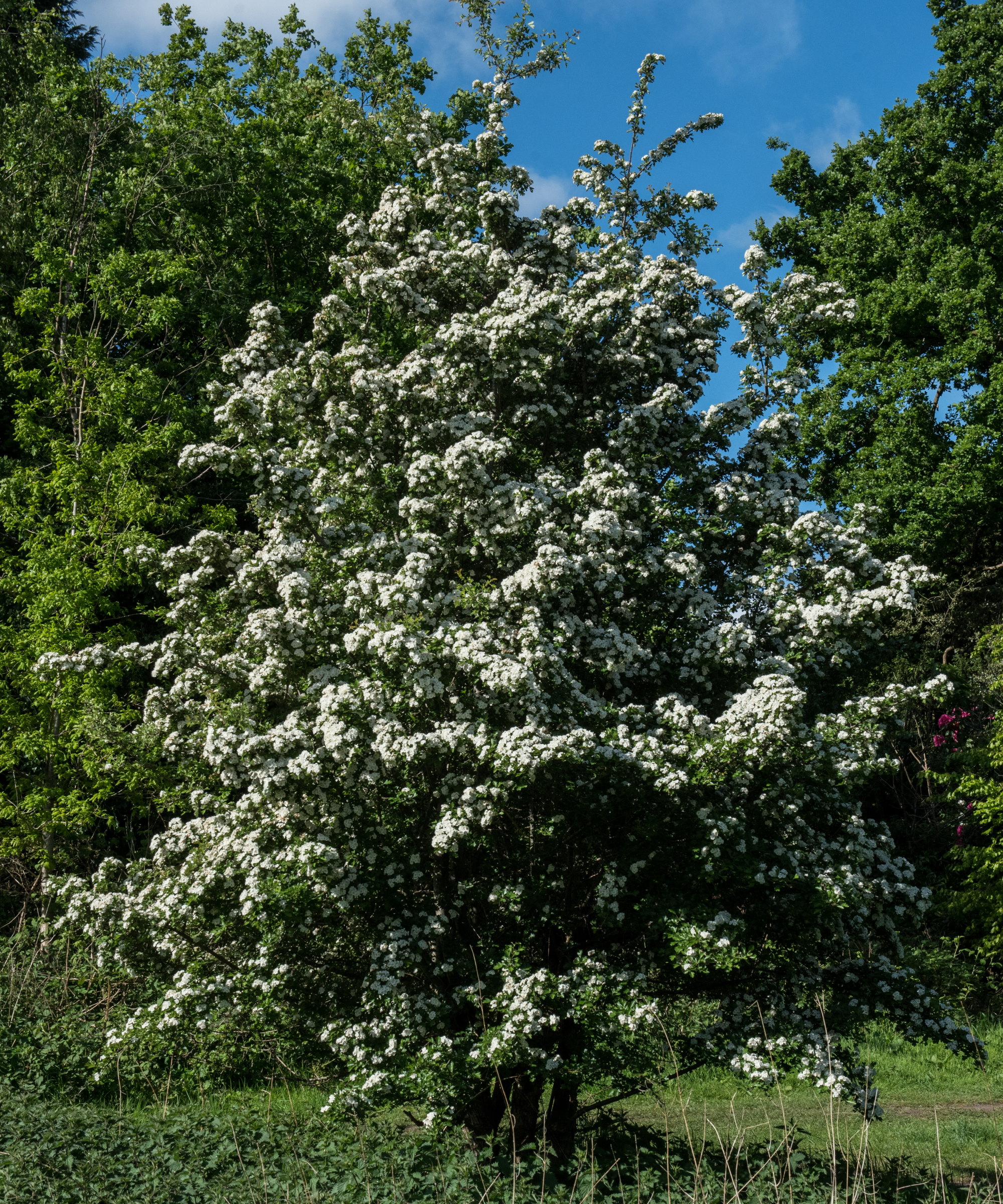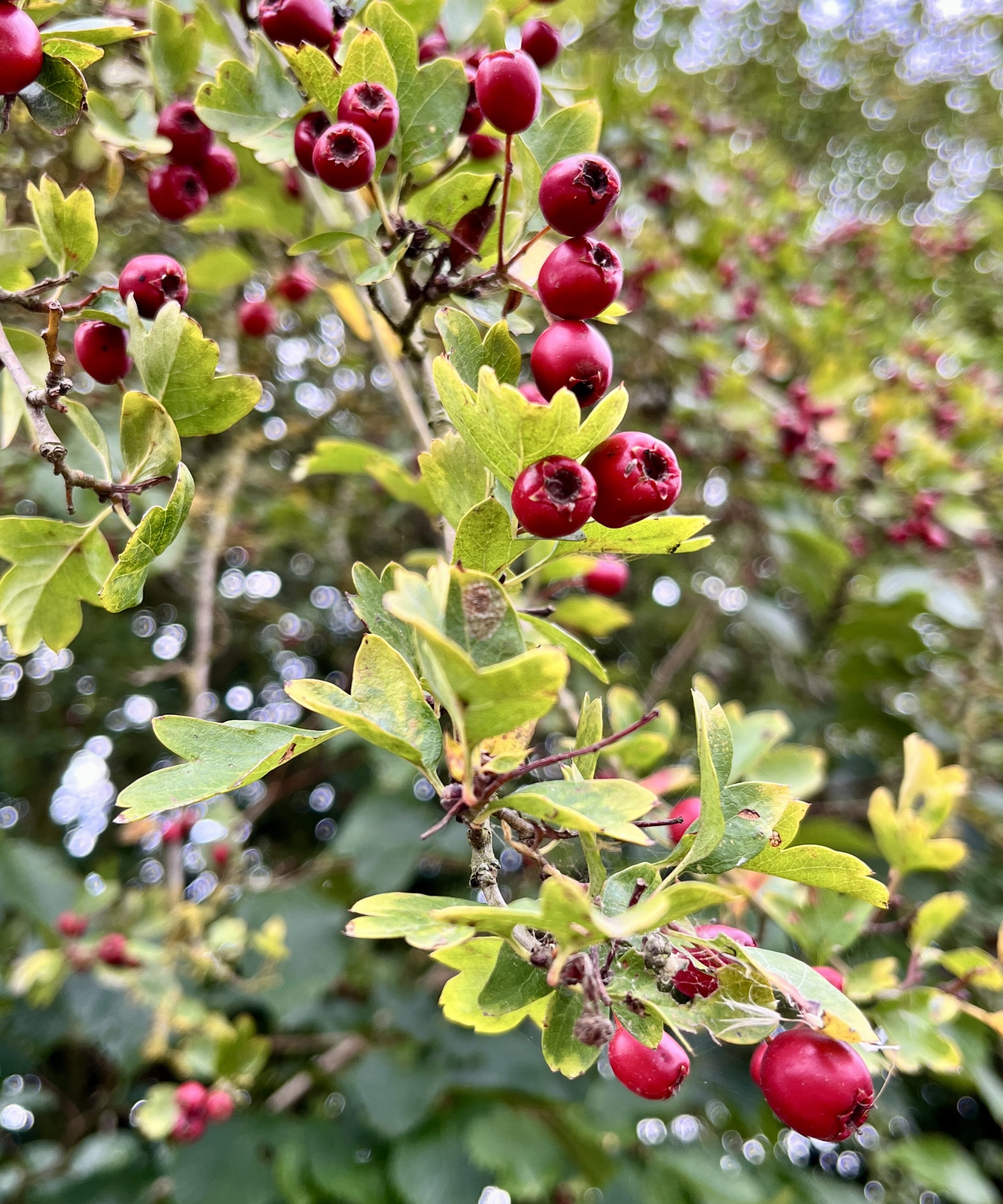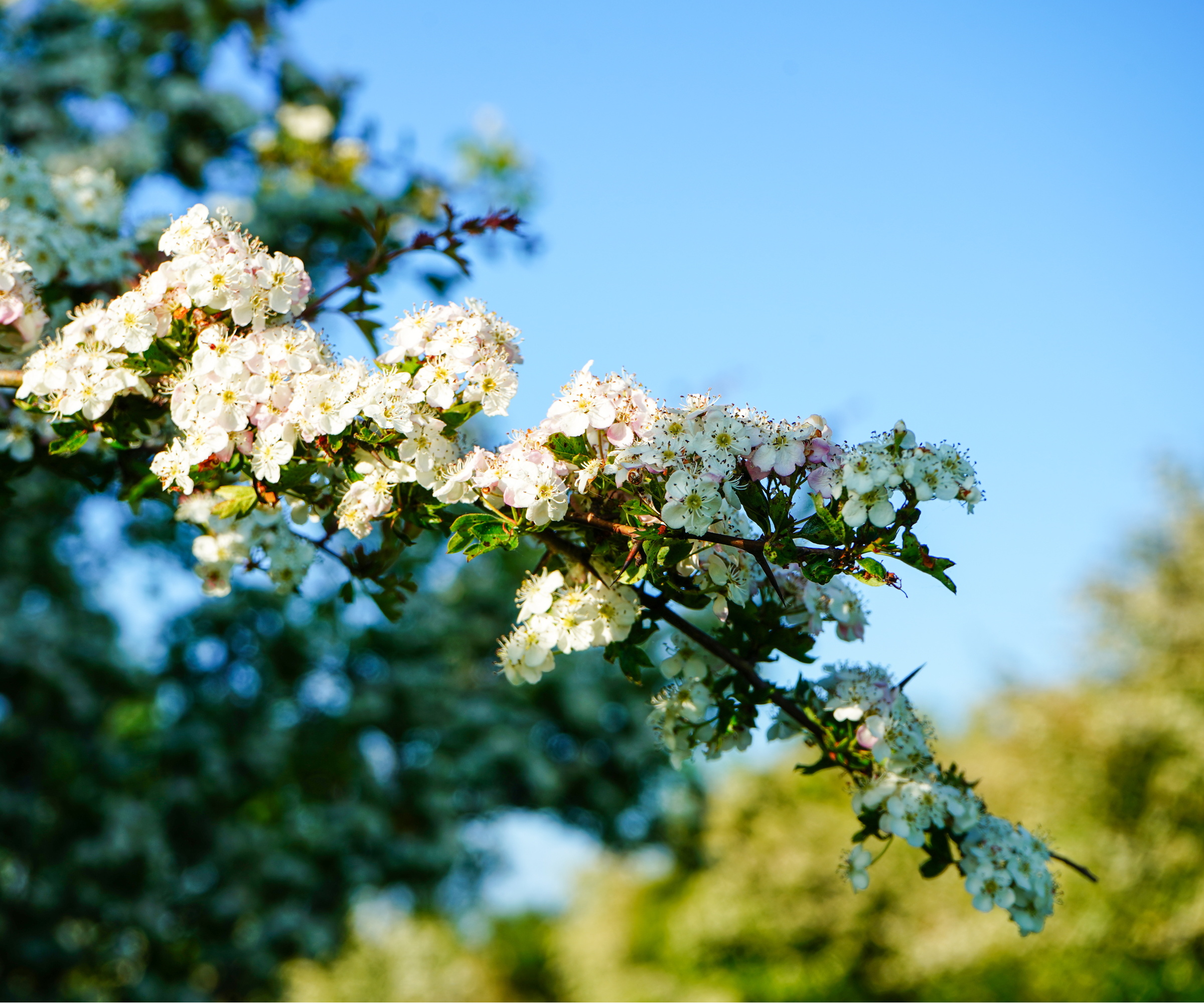
Hawthorns are easy-to-maintain trees that seldom need large-scale pruning, but some care and attention every few years will keep them healthy, safe, and looking their best.
To prune hawthorn trees correctly, you must understand when and how to do the task. This is important as incorrect pruning can leave them susceptible to damage, pests, and diseases. The key take-home points are to prune during dormancy and to do so with a light touch.
This guide reveals when to prune trees to keep them safe and avoid stress and highlights simple pruning steps to follow. Featuring tips and advice from experienced landscaping professionals to help you confidently and correctly prune hawthorn trees.

When and how to prune hawthorn trees - an expert guide
As a spring-flowering tree with red berries, hawthorns are great ornamental additions to any space and correct pruning will keep the tree productive to enhance the flowering and fruiting.
Hawthorn trees can grow up to 50 feet tall, though can be controlled and shaped through regular pruning. If your tree is large and cannot be comfortably pruned from the ground or a tripod ladder, it is advisable to get a professional to trim it.
When to prune hawthorn trees

Knowing when to prune hawthorn trees keeps them safe from pests and diseases and triggers the best response to trimming. Heading out and cutting at the wrong time would be a tree pruning mistake that can stress the tree and leave it susceptible to damage.
To start, it is best to wait and not do any pruning for the first few years after you plant a tree. Pruning hawthorns too early in their life can impact the tree’s growth, it is best to wait until it reaches at least four feet before starting to prune. Even when established, mature hawthorns won’t need pruning annually and a bit of attention every 3-5 years can be sufficient.
The best time to prune hawthorn is late winter or early spring. Pruning during dormancy reduces stress, keeps trees healthy and ensures they heal wounds quickly.
Eduard Negodenko, a landscaping expert and gardener at Avanti Landscaping, explains how pruning in late winter or early spring limits stress and prevents disease.
‘Hawthorn trees lose their sap in great amounts when pruned too late into the season,’ says Eduard. ‘This timing is very significant in preventing sap loss that weakens the tree.’
Limiting sap loss is key to healthy trees, as bleeding sap attracts insects that carry fungi and diseases. ‘Infections from fungi, such as leaf spot, which thrives during warm, humid conditions, can be minimal because pruning during dormancy is a time when the sap flow is low,’ adds Eduard.
You should never prune trees in summer or fall. Pruning in the fall triggers a flush of new growth that will not have sufficient time to harden and would be damaged by frosts.
How to prune hawthorn trees in 5 steps

It is imperative to be prepared to prune hawthorn trees. This includes ensuring all pruning tools are clean and sharp, making pruning easier and keeping trees healthy.
You may need pruning shears, loppers, and a pruning saw. You also need protective equipment, including thornproof gardening gloves, long sleeves, and eye protection, as hawthorn trees have large thorns.
Once you are geared up to prune, the following five steps are recommended by the experts:
- Remove the 3Ds - Start by looking over the tree and removing dead, damaged, or diseased branches. Prune these tree branches back to just above an outward-facing bud or close to the branch collar. Avoid cutting flush against the tree as that is a pruning mistake which can lead to dieback that may get into the trunk.
- Thin the canopy - The next step is to remove overcrowded sections, crossing branches, or any growing inwards towards the centre of the canopy. Todd Hendricks, a landscaping expert from Louisville Landscape Pros, says that dense branches can prevent lower ones from getting enough light and thinning the canopy can improve air and light circulation to keep the tree healthy. ‘Dense areas of branches can cause poor air circulation, which traps moisture,’ he warns, as this can increase the risk of diseases or fungal infections in the canopy. Todd adds: ‘So even if your branches aren’t dead or diseased, you need to trim them if they’re growing too tightly and blocking sunlight from getting to the lower branches or hindering air circulation.’
- Trim to shape - Trim back unruly branches to gently shape the tree, always cutting just above a healthy outward-facing bud to encourage new growth in the right direction. Step away from the tree regularly and take a close look at it. ‘Picture how it would look if you pruned each branch,’ says Todd Hendricks. ‘This way, you’ll be able to tell which are the best healthy branches to prune to preserve your aesthetic as much as possible.’
- Remove water sprouts and suckers - Remove any unwanted growth, such as water sprouts or suckers. Eduard Negodenko advises: ‘These are the long-fast, weak-growing shoots generally found from the trunk or roots, I promptly remove them, as they will distribute the energy away from the main structure of the tree.’ Water suckers appear as vigorous, upright shoots on the trunk or branches, while suckers appear at ground level. Remove both as far back as possible.
- Don’t over-prune - Hawthorn trees do not respond well to hard pruning, so avoid getting too carried away with the pruning tools. The tree will perform better when approached with a lighter touch. Most of the time, avoid pruning more than 20 per cent of the tree. Even when more thinning and shaping is required, don’t prune over one-third of the canopy in one year.
This pair of 28" steel blade garden bypass loppers can prune tree branches up to 1.5 inches in diameter. Featuring a non-slip grip handle for complete control when pruning.
This folding pruning saw has a 10-inch blade for cutting tree branches up to 5-6 inches in diameter. Featuring RazorTOOTH technology for fast and efficient cutting.
Felco F-2 pruning shears are strong, dependable tools with forged aluminum handles and hardened steel blades for clean cutting. Plus all components can be replaced.
FAQs
Can you prune a hawthorn tree in summer?
Major pruning in summer is inadvisable as the tree will bleed sap and be vulnerable to pests and diseases prevalent during the season. However, some light pruning of dead or damaged branches can be done when you spot them to keep the tree healthy.
Hawthorn also makes an excellent choice for a fast-growing hedge if you want to add structure or create a boundary around your yard. As well as creating a fast hedgerow, hawthorn is ideal for a wildlife garden with its nectar-rich blooms and fall berries.
If you have hawthorn as a hedging plant, prune hedges in late winter or early spring. It can also benefit from a second trim after flowering in late summer or early fall, though this second cut can be optional as it will remove berries that can be food for birds.







